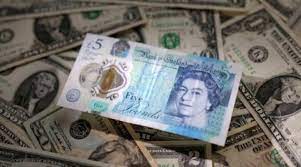Sterling rises after UK companies lower their bets for price growth

London: Sterling rose to a two week high against the euro on Thursday, after a survey from the Bank of England (BoE) showed British companies’ expectations for selling price inflation had cooled.
The BoE’s Decision Maker Panel showed expectations for output price inflation in the coming year fell to 5.3% in the three months to June, compared to 5.4% in the three months to May – the lowest reading since March 2022.
But bets that the BoE interest rate will now peak at 6.5% in February capped sterling’s gains, with traders weighing whether the British currency will be hurt by rate increases that could put more strain on the economy.
The BoE is watching economic indicators closely as it considers how many more rate hikes are needed to control inflation.
In an interview with the BBC broadcast on Thursday, BoE Governor Andrew Bailey said the BoE has to set the interest rate “to get (UK inflation) all the way down to 2%”.
“Markets remain highly sensitive to any incoming developments on the price side and the still quite aggressive BoE tightening expectations,” said Francesco Pesole, FX strategist at ING.
Expectations for more rate hikes are rising. On Wednesday, money markets were pricing in that BoE rates would peak in March 2024, reaching 6.28%.
A month ago, the expectation was for a maximum of about 5.3% by the end of this year, with the first cut a few months later.
The pound was up 0.4% against the dollar to $1.2754 by 1023 GMT, marching towards a 14-month high it touched against the greenback last month.
Against the euro , the pound was 0.17% higher at 85.30 pence, its highest level against the single currency since June 21.
Traders were also watching economic data for signs of the impact of BoE monetary tightening in the economy.
British house building fell in June at the sharpest pace in more than 14 years, excluding two months early in the COVID-19 pandemic, as interest rates drove borrowing costs higher and dampened demand, a survey showed on Thursday.
The S&P Global/CIPS construction Purchasing Managers’ Index (PMI) dropped to a five-month low of 48.9 in June from 51.6 in May, below economists’ forecast of 51.0 in a Reuters poll and the 50 level that divides growth from contraction.
While conditions weighed on the broad construction sector, the decline was driven by a steep slump in the house building component.
S&P’s all-sector PMI, which includes services and manufacturing PMI data released earlier in the week, dropped to a three-month low of 52.5 in June from May’s 53.8.





